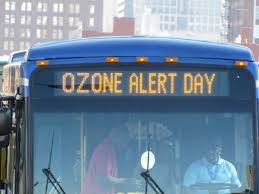
The Association of Central Oklahoma Governments (ACOG) is kicking off its Ozone Alert Day Season this week. And it comes as the agency expressed concerns the region will “likely violate federal air quality standards this year,” according to a news release.
Eric W. Pollard, Clean Cities Manager at OCOG explained that last year the region exceeded ozone standards set by the Environmental Protection Agency on eleven different occasions.
“Ozone Alert Days mean air pollution is expected to reach unhealthy levels,” Pollard said. “Ozone exposure is a health risk to the entire population, but particularly sensitive are children, the elderly, anyone with respiratory or cardiovascular illnesses, and anyone who experiences prolonged exposure.”
According to the Environmental Protection Agency (EPA) higher ozone levels correlate with increased asthma attacks and reduced lung function, increased hospitalization, and increased medication usage.
In addition to informing the public about health risks, ACOG works to inform individuals and organizations on emissions reduction actions that protect public health.
This year, ACOG will partner with the City of Mustang on the region-wide kickoff April 18, 10 AM at Mustang City Hall, 1501 N Mustang Road, with a goal of educating the public about air quality standards and actions they can take to improve air quality in the region.
According to Pollard, the City of Mustang has taken a leadership role in advancing measures to reduce emissions on Ozone Alert Days. Mustang’s City Manager instituted a policy that city crews not mow city property on Ozone Alert Days.
“Every community in Oklahoma can take action to improve air quality for residents,” said Tim Rooney, City Manager, Mustang, Oklahoma. “Pollution doesn’t abide by boundaries, so regional cooperation is key.”
“Central Oklahoma needs to avoid non-attainment designation,” said Mark W. Sweeney, AICP, Executive Director, ACOG. “It could increase the cost of doing business, slow down infrastructure projects like road and bridge construction, and add new costs on individuals and families such as higher gas prices and vehicle emissions testing.”






